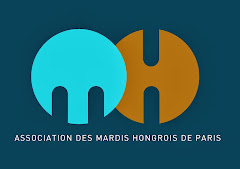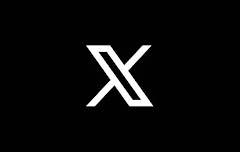Nous serons heureux de vous y accueillir.
Date : Vendredi 23 mars 2018, de 8h30 à 19h
Lieu : Auditorium, INALCO-PLC, 65, rue des Grands Moulins 75013 Paris
Langues de la formation : anglais, français
Contact : secretariat.europe(AT)inalco.fr
L'atelier sera ouvert à tous. Venez nombreux si vous partagez un intérêt pour la diversité des langues, en particulier dans le contexte de la Mitteleuropa « faite de l'apport successif de siècles toujours présents, de déchirements et de conflits jamais réglés, de blessures jamais cicatrisées, et de contradictions jamais résolues » (Claudio Magris).
La participation est gratuite, mais l'inscription préalable est nécessaire avant le lundi 19 mars 2018 à l’adresse suivante : secretariat.europe(AT)inalco.fr, en précisant vos coordonnées :
Prénom ….
Nom ….
Adresse e-mail ….
Langues / disciplines ….
Niveau d’études ….
Bien cordialement,
Thomas Szende, PU, Département Europe, INALCO
*********************
Programme / Program
Ouverture / Opening address (30 minutes) Eszter TARSOLY, SSEES, UCL London & Thomas SZENDE, INALCO, Paris (Présence du Directeur de la SSEES à confirmer / It is hoped that SSEES’s Director will be available to give an opening address on the workshop.)
Session 1 Titre / Title: L’espace culturel du Danube : langue et idéologie / Danubian Cultural Space: Language and Ideology
Animée par / Contributor: Eszter TARSOLY
Co-animée par / Discussant: Diana JAMBOROVA LEMAY
Format: Présentation interactive et discussion / Interactive presentation and discussion
Durée / Time: 45 minutes (en incluant la discussion avec l’auditoire / including discussions with audience)
History, memory, and even some present-day investment strategies invite us to think of the Danube region as a united whole, in which a conspicuous diversity of languages, faiths, and political allegiances is underpinned by less obvious similarities in everyday practices and culture. But is it possible to think of the Danube region as a distinct area from a linguistic point of view? This interactive lecture seeks to answer the question by exploring the exceptional linguistic diversity of the Danube region in Europe, and by probing into the ways in which Danubian languages have converged as a result of contact between their speakers. Special attention will be given to Hungarian, the language which, on cursory inspection, stands out most both historically and structurally in the region. This angle will allow us to elucidate the impact of cultural contact and realignment on the profile of a language. Finally, the session will conclude with a discussion on the crosslinguistic diversity and convergence of beliefs about language in the region.
Session 2 Titre / Title: Parler à propos de la langue – la médiation culturelle / Talking about Language – Cultural Mediation
Animée par / Contributor: Tina PARTE
Co-animée / Discussant: Snejana GADJEVA
Format: Présentation interactive et discussion / Interactive presentation and discussion
Durée / Time: 30 minutes (en incluant la discussion avec l’auditoire / including discussion with audience)
In this session the wide-spread metaphor that a language is an organism, which has grown and evolved naturally, will be scrutinized. By means of a thought-image taken from the German language it will be argued that any language is always embedded in a particular social context and is as much a product of its own internal development as well as determined by external circumstances. The vitality of a language, for example, might be promoted or impeded depending on the prestige of the language it happens to come into contact with. In short, languages are never quite what they seem to be. They are not monolithic and unchangeable entities embodying the nation state. A national language has undergone a process of codification and standardisation, in which certain varieties and languages have been chosen over others. When talking about a language, we should be aware of the extent to which it is always already socially and culturally mediated. As linguists as well as language teachers we function as mediators, who make others aware of the complexity of talking about language in order to engage them in a productive debate about it.
Session 3 Titre / Title: Des nations séparées par une seule langue ? (Le cas du serbo-croate et de l’allemand) / Nations separated by a single language? (The case of Serbo-Croatian and German)
Animée par / Contributor: Jelena ĆALIC
Co-animée / Discussant: Marijana PETROVIC
Format : Présentation, activité et discussion / Presentation, activity, and discussion
Durée / Time: 45 minutes (en incluant la discussion avec l’auditoire / including discussion with audience)
In this session overlaps and discontinuities in the symbolic function of language across the region will be presented through two case studies. Firstly, we will explore the link between nation building processes in the former Yugoslav states prior to and after Yugoslavia's break-up in the 1990s and the creation of discontinuity with a certain linguistic and language naming tradition in the Serbo-Croatian speaking area. Common narratives surrounding the description of fragmentation of Serbo-Croatian will be presented, among them the one that promotes the concept of "pluricentric languages". Secondly, the concept of "pluricentric languages" will be explored in a contrastive framework, using case studies from both the Serbo-Croatian language and the German language. The session will conclude with looking into regional perceptions of, and reactions to, pluricentric models for standard languages, which unveil continuities as well as controversies across the linguistic communities in question.
Session 4 Titre / Title: Mots sans frontières (emprunt lexical en roumain) / Words Without Borders (Lexical borrowing in Romanian)
Animée par / Contributor: Ramona GÖNCZÖL
Co-animée par / Discussant: Alexandru MARDALE
Format: Présentation interactive et discussion / interactive presentation and discussion
Durée / Time: 30 minutes (en incluant la discussion avec l’auditoire / including discussion with audience)
This presentation will explain how Romanian has a unique place amongst other Romance languages due to its geographical position as well as cultural contacts it has had over time. I will present examples of grammatical and lexical borrowings in Romanian that come from a variety of source languages. Slavic neighbours and various past invaders, Vulgar Latin through the Roman occupation, later French cultural influences as well as other sources are just a few of the examples that will be provided alongside the change in script from Cyrillic to Latin. I will present lexical doublets and how words with the same meaning can coexist in Romanian and how they are used in different linguistic and cultural registers. The presentation is coupled with practical activities for the audience to get involved with.
Session 5 Titre / Title: Qu’est-ce qui fait une vraie langue ? (Focus sur le yiddish) / What Makes a Real Language? (Yiddish in Focus)
Animée / Contributor: Lily KAHN
Co-animé par / Discussant: Arnaud BIKARD
Format: Présentation, activité et discussion / Presentation, activity, and discussion
Durée / Time: 45 minutes (en incluant la discussion avec l’auditoire / including discussion with audience)
Yiddish, the traditional vernacular of Ashkenazic (Central and East European) Jewry, has a rich linguistic character reflecting a thousand years of Jewish history and culture in the region. This session will provide a historical overview of this fascinating language from its beginnings until the present day, including the scholarly debate regarding the origins and early spread of Yiddish; its characteristic fusion of Germanic, Romance, Semitic, and Slavic components; the development of medieval and modern Yiddish literature; and the status of Yiddish in the twenty-first century. The session will devote particular attention to traditional and current speaker attitudes to Yiddish, especially the common view that it is not a ‘real’ language. It will also discuss the process of standardisation that Yiddish underwent in the early- to mid-twentieth century, and consider the circumstances and significance of such a process in the case of a stateless language.
Remarques conclusives et discussion avec la participation de l’auditoire / Concluding remarks and panel discussion with audience participation (30 minutes).
Présentation synthétique de la formation
Le Danube : espace culturel – espace linguistique
Qu'arrive-t-il aux locuteurs de langues diverses, qui forment des groupes dont les pratiques sociales et économiques diffèrent, lorsqu'ils entrent en contact mutuellement dans une région géographique donnée, comme sur les bords du Danube ou dans une ville multiethnique ? Est-il possible de concevoir des groupes de locuteurs parlant différentes langues comme une seule communauté de discours basée sur les pratiques culturelles qu’ils partagent et sur les chevauchements dans leurs croyances sur la langue ? L’atelier de formation proposé explore ces questions dans le contexte des langues et des peuples de la région du Danube : le hongrois, le roumain, le yiddish, le serbe et le croate, principalement, mais en incluant aussi des exemples de l’allemand, du grec et du romani. En outre, l'atelier traite du rôle médiateur de l'espace dans lequel les discussions sur ces sujets ont lieu, notamment le rôle de l'espace pédagogique, ainsi que le rôle médiateur des enseignants des langues de l’Europe Centrale et Orientale, aussi bien que celui des étudiants au Royaume-Uni.
La région du Danube est aujourd’hui, comme à travers l’histoire, l'une des régions présentant l’une des plus grandes diversités linguistiques en Europe. Les langues en question appartiennent à deux familles généalogiquement différentes (l’indo-européen et l’ouralien) et l’une d’entre elles (le yiddish) porte des traces d'un troisième groupe (le sémitique). Au sein de l'indo-européen, trois groupes différents sont représentés (les langues germaniques, romanes et slaves). L'atelier utilise des données linguistiques de ces langues (textes courts et listes de mots mises en contraste), et discute l'histoire des idées concernant ces langues (les tendances de purisme, les périodes de divergence et de convergence, l’histoire des standardisations, les représentations populaires sur les langues, etc.). Il s’agit d’élucider les contacts linguistiques et culturels à la fois à partir d'une perspective purement linguistique (familles linguistiques / caractéristiques typologiques / aréalité) et à partir d’une perspective sociolinguistique (multilinguisme / standards, modèles pluricentriques ou monocentriques pour les langues standard, langue et identité). L'atelier explore ainsi les convergences et les divergences, les frictions et les flux interculturels des langues du Danube.
Tout d’abord, les animatrices discuteront l’idée d’une union linguistique danubienne qui a été proposée – et rejetée – par des chercheurs. Ensuite, elles se concentreront sur la diversité et la convergence des attitudes à l’égard des langues dans la région. Enfin, les animatrices de l’atelier feront part de leurs expériences d’enseignement acquises dans le contexte de l’enseignement supérieur britannique, dans le cadre d’un cours autour des contacts linguistiques de la région danubienne. L’atelier sera interactif et ludique ; il se déroulera en anglais et en français, si nécessaire avec des traductions.
Comité d’organisation Contact Eszter TARSOLY, SSEES, UCL thomas.szende(AT)inalco.fr Snejana GADJEVA, INALCO Marijana PETROVIC, INALCO Thomas SZENDE, INALCO



Aucun commentaire:
Enregistrer un commentaire
Remarque : Seul un membre de ce blog est autorisé à enregistrer un commentaire.